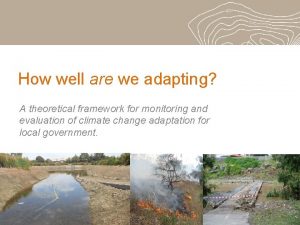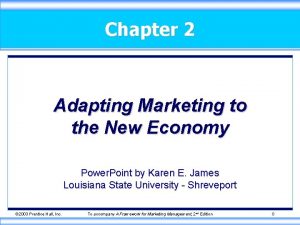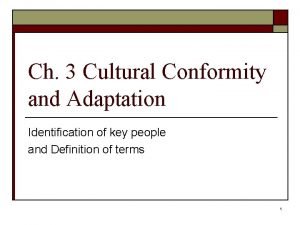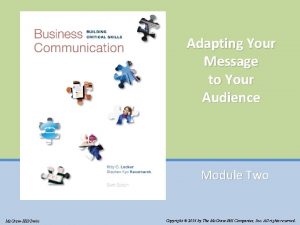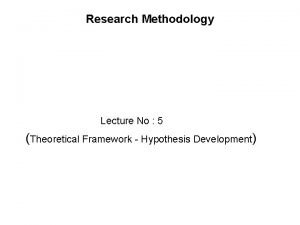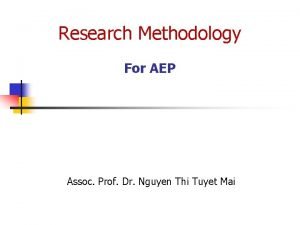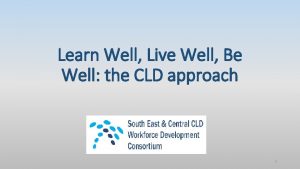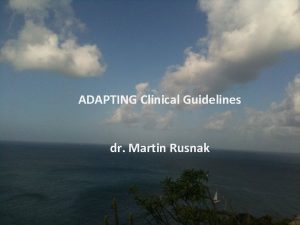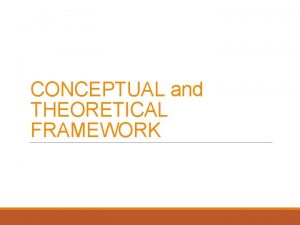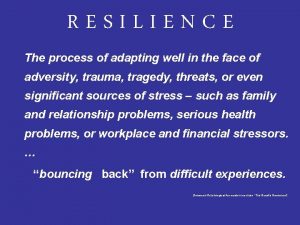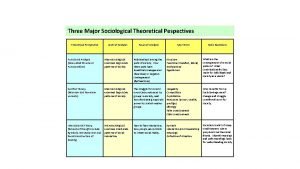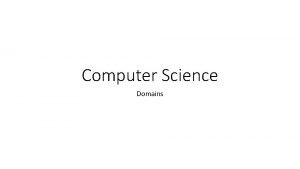How well are we adapting A theoretical framework


















- Slides: 18

How well are we adapting? A theoretical framework for monitoring and evaluation of climate change adaptation for local government.

Purpose? Why are we doing this? Many possible reasons…. . • • To evaluate effectiveness To assess efficiency To understand equity To provide accountability To assess outcomes To improve learning To improve future activities or interventions To compare with other similar activities or interventions. (Adapt. ME Toolkit, 2011)

5. Designing a Framework – Approaches and Indicators: Some key lessons from the literature Many frameworks – few implemented • Purposes for M & E – why? • Many approaches used – process/learning • Many challenges to designing a framework – principles; shifting baselines; indicator selection/data availability; implementation and embedding • Adaptation M & E – not one size fits all; local context/issues important https: //gallery. mailchimp. com/b 38874 b 25 e 686137780 eb 836 e/files/M_E_Lit_Review. pdf

What are we measuring against? • Against objectives? – Comparing outputs and outcomes against what a program intended • Against ‘good adaptation’ (Principles? ) – Defined by guiding principles such as sustainability, collaborative, open, effective, efficient, equitable – ADAPT Principles: Adaptive learning; Dynamic monitoring, Active, Participatory, Thorough (Villeneuva 2011) • Against a baseline – Conditions change, before and after interventions not always adequate – Shifting baselines….

Baselines for 5 areas (World Bank 2010) • Climate data: climate parameters such as temperature, rainfall, humidity, and local habitat parameters such as soil conditions and water salinity • Socio-economic data: Indicators of economic and social well-being in a community, including income, food security, health, and the impact of climate change on these factors • Data on institutional and policy processes: Capacity and existence of appropriate institutions (official or unofficial) and the legal framework (e. g. existence and implementation of climate change policies. ) • Ecosystem services: The extent to which ecosystem services are affected by the impacts of climate change • Coping Strategies: What strategies the local population has so far used to cope with climate change variability.

Choosing Indicators: Issues to consider in dealing with shifting or dynamic baselines • Moving targets and scenarios • Adaptive capacity (AC) and vulnerability (V) are dynamic variables Use of generic indicators to capture underlying causes of vulnerability while specific indicators can be used to monitor the specific measures undertaken to reduce vulnerability Evaluation processes snapshot V and AC at the end of a program but this needs to be followed up by constant monitoring over longterm M & E needs to capture the existence of V and AC and those processes that may effect the distribution of V or how capacity leads to action

‘How Well Are We Adapting? ’ Reporting to Who and Why? Different audiences, Different objectives Council objectives • • • Community objectives • • • Monitoring: • • To inform future decision making and adaptation activities To improve learning and build capacity For comparative purposes Improve awareness: – What is happening – What is council’s responsibility Assure action is happening Climate change education The delivery of actions with concrete outcomes Building the capacity of the council and community to respond to and manage climate impacts.

The How Well Are We Adapting framework

Project and piloting Governance and Research Project evaluation Framework design workshops Implementing and ongoing reporting Theme indicator development with councils Piloting and indicator refinement

Principles of adaptation Adaptation implements processes or outcomes that: • Continue to perform under a number of different future scenarios. • Increase flexibility • Build in resilience and/or redundancy • Meet planned budgets • Don’t increase CO 2 -e • Don’t increase community vulnerability • Avoids adverse outcomes

6. Piloting the Framework: Themes and Indicators Community Wellbeing and Emergency management

Community Wellbeing and Emergency Management: Indicators 1. Service Vulnerability and Resilience: – Knowledge of vulnerable people exposed to extreme weather events – Continuity of critical home and community care services – Residents seeking refuge in official council run emergency relief centres during severe weather events 2. Institutional capacity: – Staff capacity to address climate change in decision making (interviews and surveys) – Emergency management framework recognises and responds to changing risk levels with climate change 3. Resourcing and Budgeting: – Tracking long term trends in investment towards preparing for/responding to extreme weather events 4. Community Participation: – Community preparedness to respond to extreme weather events – Community lifestyle and household resilience to a changing climate.

Open Space and Water Security

Open Space and Water Security: Indicators 1. Service Vulnerability/Resilience: – Type and Volume of water supply used; – variation of gap in water supply compared to demand over time; – water efficiency 2. Institutional Capacity: 3. Resourcing: – changes in long term trend in the cost and frequency of extreme weather event cleanups – Understanding the impact of climate change on council’s operational budgets 4. Participation and Awareness: – Understanding community satisfaction with open space over time

Benefits Budgeting and resourcing Identifying where councils are absorbing more costs, and why, creating an evidence base. Being on the front foot Having meaningful stories to argue a strong case for adaptation support with upper management. Being prepared for new requirements in an updated Climate Change Act. Whole of council response Raising institutional capacity, avoiding adverse outcomes, protecting services to vulnerable residents.

Value of the framework to inform decision making

What could long term trending tell us? Potential future clean up events and costs 400000 350000 Event 300000 State insurance fund threshold 250000 200000 150000 100000 50000 0 2015 2025 2035 2045 2055 2065 2075 2085

Key lessons • Embedding happens when the benefits are seen by the people generating the reporting (grounded in the day-to-day) • Embedding happens well when the framework is incorporated with council processes and thereby transcends staff turn-over. • Top down and bottom up process is needed. • Eventual goal is to break down internal barriers and create organisational change – shared responsibility for climate change. • Adaptation M & E – not one size fits all; local context/issues important.
 Insidan region jh
Insidan region jh How well are we adapting
How well are we adapting How well are we adapting
How well are we adapting Drawing a conceptual framework
Drawing a conceptual framework Theoretical framework
Theoretical framework Conceptual framework vs theoretical framework
Conceptual framework vs theoretical framework Theoretical and conceptual framework
Theoretical and conceptual framework Adapting curriculum to bridge equity gaps
Adapting curriculum to bridge equity gaps Adapting to your audience
Adapting to your audience How to adapt marketing to the new economy
How to adapt marketing to the new economy Adapting the price
Adapting the price Differentiate adopting materials and adapting materials
Differentiate adopting materials and adapting materials The process of adapting borrowed cultural traits.
The process of adapting borrowed cultural traits. 'adapting the message to your audience
'adapting the message to your audience Adapting the price
Adapting the price Adapting to challenges of the micro environment
Adapting to challenges of the micro environment Theoretical framework and hypothesis development
Theoretical framework and hypothesis development Contoh theoretical framework
Contoh theoretical framework Theoretical framework example
Theoretical framework example


